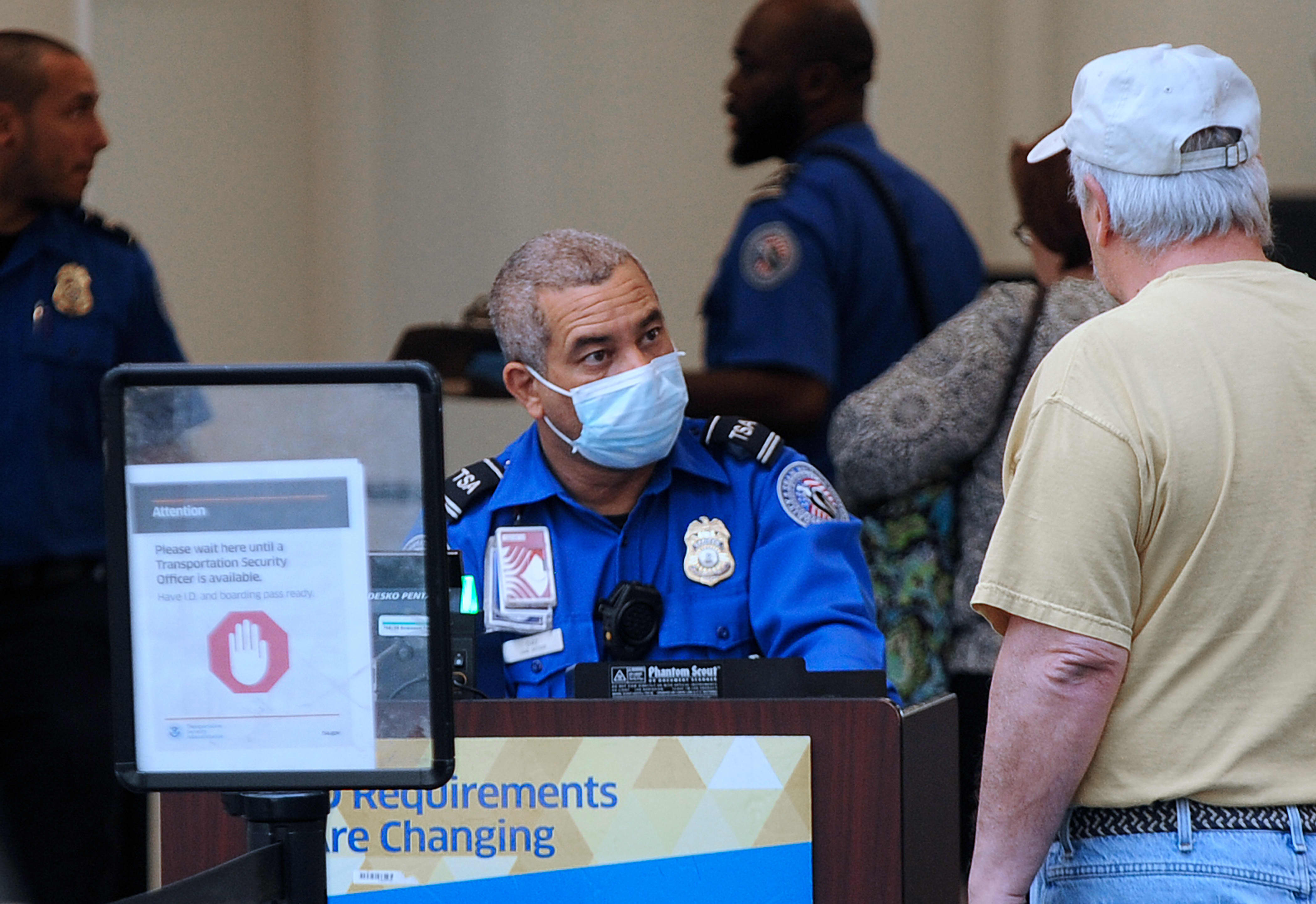A TSA officer wears a protective mask while screening travellers at Orlando International Airport. In the past 14 days across the nation, 58 TSA screening officers have tested positive for COVID-19, including 9 in Orlando.
Paul Hennessy | Barcroft Media | Getty Images
The Transportation Security Administration is tweaking some airport screening procedures to limit contact with passengers and officers as the peak summer season approaches in the middle of the coronavirus pandemic.
For one, travelers should expect more distance between passengers at security checkpoints. Passengers will also have to place their electronic or paper boarding passes on readers themselves, instead of handing them over to TSA agents.
The TSA is also urging travelers to wear face masks, which major airlines now require travelers to wear on board. The agency says travelers should remove food from bags and put items like belts, wallets, keys and phones into their carry-on bags to “instead of into the bins to reduce touch-points during the screening process.”
The pandemic, and measures to curb the disease’s spread like stay-at-home orders, has kept most would-be travelers home, devastating demand. The number of travelers passing through security checkpoints has risen sharply from April but is still down 92% this month from a year ago.
Airlines are scrambling to calm travelers nervous about flying during the pandemic, while federal agencies have mostly provided guidelines instead of requirements.
Carriers are grappling, too, with the challenges of distancing passengers on board by either capping capacity of certain flights or spacing travelers out.
Delta Air Lines, for example, said it plans to add 100 flights in June so planes are no more than 60% full. After a photo of a packed United Airlines plane was retweeted thousands of times earlier this month, the company said it would start informing travelers if their flights were more than 70% full and allow them to switch to another or get a travel credit.
